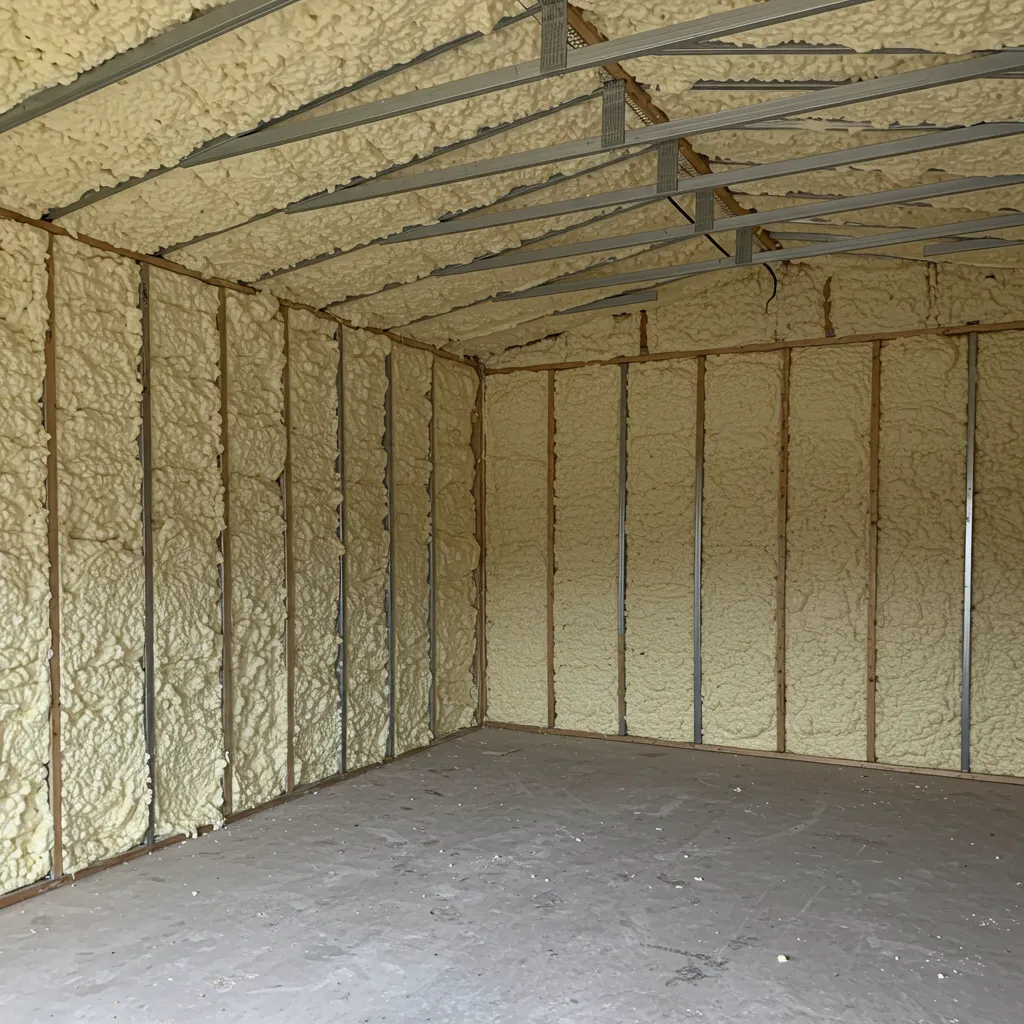
Spray foam insulation is not fully waterproof, but closed-cell spray foam is water-resistant and can act as a moisture barrier under specific conditions. Open-cell spray foam, by contrast, is not water-resistant and will absorb water, making it unsuitable for areas prone to moisture or direct water contact.
The key factor is the type of spray foam used. Closed-cell spray foam has a denser structure, giving it a high resistance to water penetration. While it can withstand humidity, rain exposure, and vapor intrusion, it is not a substitute for waterproofing systems in severe conditions like standing water or foundation leaks. This article outlines critical comparisons, technical data, real-world use cases, and expert guidance to help homeowners and commercial property managers make informed insulation decisions.
Cascadia Spray Foam of Seattle delivers firsthand insight based on years of hands-on insulation work across the Pacific Northwest’s humid, marine climate zones, where moisture resilience is crucial for building longevity and energy performance.
| Feature | Open-Cell Spray Foam | Closed-Cell Spray Foam |
|---|---|---|
| Water Absorption | High – absorbs and holds water | Low – resists water penetration |
| Permeability (perm rating) | ~30-40 perms | ~0.5-1.5 perms |
| Density | ~0.5 lb/ft³ | ~2 lb/ft³ |
| Structural Rigidity | Soft, flexible | Rigid, adds structural strength |
| Suitability for Wet Areas | Not recommended | Conditionally suitable |
| Use in Crawl Spaces/Basements | Avoid | Often recommended with vapor control layer |
Bonus Tip: Closed-cell spray foam performs best when applied in thicknesses that meet or exceed local code for vapor barrier requirements—typically at least 1.5–2 inches.
| Specification | Typical Value |
|---|---|
| R-Value per inch | 6.0–7.0 |
| Water Absorption (ASTM D2842) | < 2% by volume |
| Water Vapor Permeance | ≤ 1.5 perms at 2″ thickness |
| Tensile Strength (ASTM D1623) | ≥ 30 psi |
| Closed Cell Content | ≥ 90% |
| Application Temperature Range | 40°F to 120°F (surface) |
| Flame Spread Index (ASTM E84) | ≤ 25 |
In a marine climate like Seattle’s, high year-round humidity and rainfall place significant demands on insulation materials. Spray foam is often exposed to:
Closed-cell spray foam is commonly chosen for basement walls, subfloors, exterior sheathing, and foundation transitions to reduce vapor intrusion and maintain thermal efficiency. However, spray foam should never be used as a standalone waterproofing solution in areas with direct water exposure or hydrostatic pressure.
Bonus Tip: Always pair closed-cell spray foam in below-grade areas with external waterproofing membranes or drainage systems for complete protection.
When evaluating whether spray foam is suitable for your space, consider the following:
According to a 2023 study by the Building Science Corporation, improper use of open-cell foam in moisture-sensitive areas led to mold development in 62% of retrofitted homes lacking vapor control. (Source: Building Science Corporation, Report No. 2304)
No. Spray foam is not a sealant for active leaks. Water entry from cracks, pipes, or structural faults must be corrected first.
It reduces the risk when used correctly by eliminating air gaps and limiting vapor movement. However, if moisture becomes trapped, mold can still form.
It is part of a system. Use it alongside sump pumps, drainage mats, and vapor barriers for best results.
Closed-cell foam holds up well due to low permeability. It also adds thermal performance to resist condensation.
According to Allied Market Research (2024), the spray foam insulation market is projected to reach $5.2 billion by 2031, driven largely by demand for moisture-resistant and energy-efficient building materials. (Source: Allied Market Research, 2024 Global Forecast Report)
Additionally, a U.S. Department of Energy study (2023) found that buildings using closed-cell foam in key envelope areas reduced energy use by 18-22% in mixed marine climates like Seattle. (Source: U.S. DOE Building America Program)
Speak directly with insulation experts familiar with the Pacific Northwest’s unique moisture conditions. Cascadia Spray Foam of Seattle has the hands-on experience to recommend and apply the right product based on your building type and climate zone.
Contact Information:
Closed-cell foam resists vapor movement, but improper installation can lead to moisture being sealed inside wall cavities. Professional assessment is essential.
Closed-cell spray foam can last 20–30 years or more in damp conditions if not subjected to direct water intrusion.
It may be used with a proper vapor barrier and waterproof backing board, but direct exposure to water must still be avoided.
It absorbs water and loses insulation value. If saturation occurs, removal is often necessary to prevent mold growth.
Yes, particularly closed-cell foam. It offers superior resistance to vapor and eliminates air movement that encourages condensation.